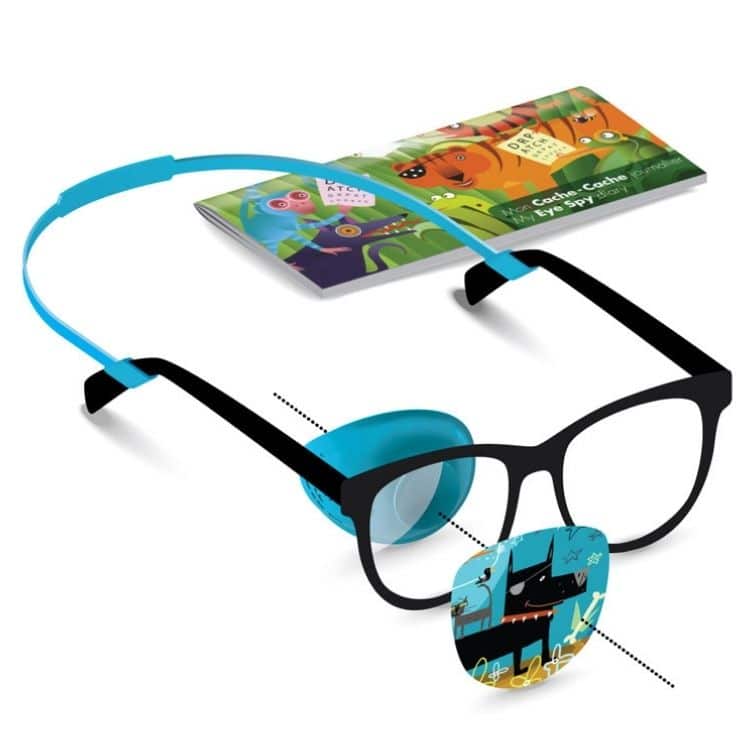DrPatch’s White Papers are summaries of scientific research primarily for eye care professionals. But patients also find them useful. Easy to read, they help to better understand patching treatment options.
The Emotional Impact Of Amblyopia Treatment In Preschool Children
Offering Treatment That Improves A Child’s Well-Being
CERTIFICATION
Based on my review of the content of this White Paper, I can certify that it provides a technically accurate summary of the Research Abstract from the PubMed database maintained by the U.S. National Institutes of Health. The overall conclusion provided by DrPatch is supported by the scientific research, and it also matches my own experience with patients.
Patrick Hamel, MD, FRCSC, Ophthalmologist, Ophthalmology Pediatrics, CHU Ste-Justine, Montreal, Canada
INTRODUCTION
I started DrPatch without even knowing that any research existed to support what I already felt in my heart. I was shocked when I learned that my son Zacharie needed to wear an eyepatch. But that was nothing compared to the devastation I felt when I saw how humiliated he was, having to wear traditional medicinal-looking patches. But he loved wearing the fun patches I had designed for him and happily wore them to the end of a successful treatment program.
Lyse-Anne Roy, President and CEO, DrPatch Inc.
RESEARCH ABSTRACT
Title: The Emotional Impact Of Amblyopia Treatment In Preschool Children Authors: Hrisos S, Clarke MP, Wright CM. Department of Ophthalmology, University of Newcastle upon Tyne,
United Kingdom.
Purpose: This research investigated the emotional status of children undergoing active treatment for amblyopia.
Participants: Parents of 177 children with a visual impairment in one eye. Referred from preschool vision screening, the children participated in a controlled trial of treatment consisting of: (a) either glasses with or without patches, (b) glasses alone, or (c) treatment deferred for 1 year.
Methods: Researchers mailed parents a self-completion questionnaire, which included standard behavioral questions. It went to: (a) parents of all children recruited to the trial at age 4 years, (b) 66 whose deferred treatment began at age 5 years, and (c) 151 remaining in the trial at the end of follow-up.
Measures: Main outcome measures included: (a) mean scores per treatment group on the Revised Rutter Parent Scale for Preschool Children and (b) comparison of parent responses to questions assessing the child’s general well-being and difficulties associated with treatment.
Results: Most parents reported having difficulty with patching their child regardless of age (77% at age 4 years and 73% at age 5 years). Fewer reported difficulties with glasses alone (42% and 53%, respectively). Children were significantly more upset by patching than by glasses only, as were the parents of 4-year-olds. Most parents thought their children were happy, cooperative, and good tempered, and behavioral scores did not differ between treatment groups.
Conclusions: Treatment for visual impairment in one eye is not easy to implement and is commonly associated with some degree of distress. Despite this, results showed no impact on the child’s global well-being or behavior either during or after the treatment period.
White Paper # 15288987 2
DRPATCH CONCLUSION
Scientific research shows that treatment for children with amblyopia is not easy to implement. It can be stressful for both children and parents, especially when it involves wearing patches.
DrPatch’s own research indicates that children wear an attractive patch more willingly and thus participate more readily in a patching treatment program. We can assume that children who wear patches that they want to wear are less likely to suffer the distress normally associated with patching.
With the variety of attractive alternatives to the traditional medicinal-looking patch, eye care professionals may now offer patching treatment programs that are more likely to be carried out to a successful conclusion.



